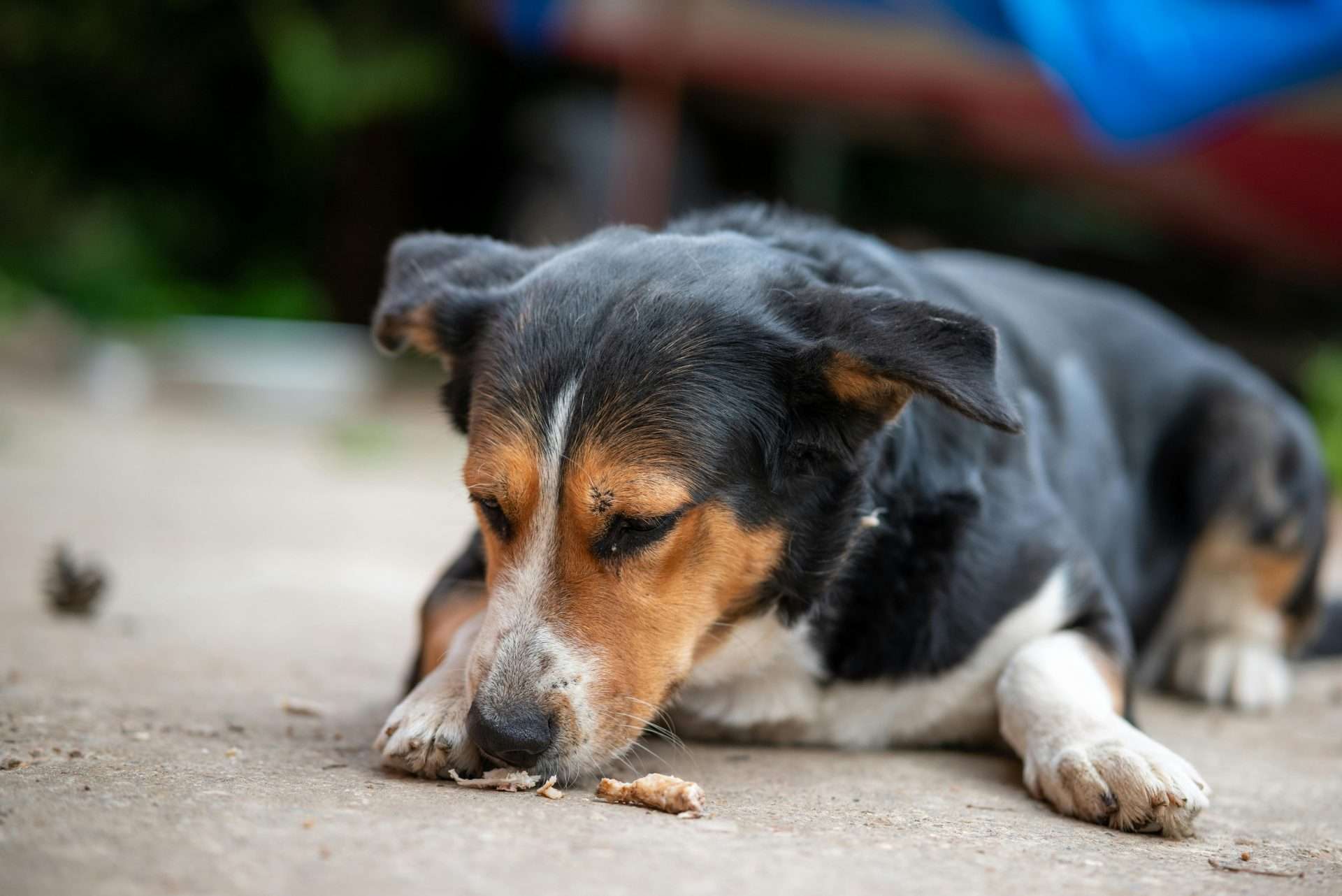Can Dogs Eat Chicken Feet? A Healthy Treat for Your Pup

Chicken feet might not be the first treat that comes to mind when considering dog snacks, but they offer surprising benefits. Yes, dogs can eat chicken feet, which can be a healthy and tasty addition to your dog’s diet. Packed with protein, glucosamine, and chondroitin, they support joint health and mobility.
For dogs with joint conditions like arthritis or hip dysplasia, chicken feet provide natural nutrients that help improve joint health. Additionally, they serve as an edible, digestible toothbrush, promoting gum and dental health. These benefits make chicken feet more than an unconventional treat; they are functional.
Many pet owners may have concerns about giving their dogs chicken feet, including preparation and safety issues. However, chicken feet can be a valuable part of your dog’s diet when prepared and stored correctly. Let’s explore how to incorporate this unique treat into your furry friend’s meal plan.
Table of Contents
Key Takeaways
- Chicken feet support joint and dental health.
- Proper preparation and storage are essential.
- They are a nutritious addition to your dog’s diet.
The Composition of Chicken Feet
Chicken feet are packed with nutrients that can benefit a dog’s health. They are rich in glucosamine and chondroitin, which support joint health. They also contain protein, collagen, and calcium, contributing to overall well-being.
Nutrients and Benefits
Chicken feet are known for their high protein content. This protein is essential for muscle development and repair.
They are also a good source of collagen, which benefits skin and coat health. Collagen helps keep a dog’s coat shiny and smooth.
Calcium is another important nutrient found in chicken feet. It supports bone health and strength. Some dogs might have difficulty getting enough calcium, making chicken feet a helpful addition to their diet.
Chicken feet do not contain any toxic compounds, making them safe for most dogs. They can be fed raw or dehydrated, providing flexibility in serving.
Glucosamine and Chondroitin for Joint Health
Chicken feet are especially valued for their high levels of glucosamine and chondroitin.
Glucosamine aids in the repair of cartilage, which cushions the joints. Their cartilage can wear down as dogs age, leading to joint pain and arthritis. Regular consumption of glucosamine can help slow this process.
Chondroitin works synergistically with glucosamine. It helps reduce inflammation and can promote the repair of damaged cartilage. This combination is particularly beneficial for older dogs or those predisposed to joint issues.
Together, these compounds support joint health and mobility. They can help dogs maintain an active lifestyle, reducing discomfort and improving quality of life. For these reasons, many dog owners find chicken feet a valuable part of their pet’s diet.
For additional information on the benefits and preparation, see this guide to chicken feet for dogs and learn more about their nutrition facts.
Chicken Feet as a Dietary Option
Chicken feet can be a nutritious addition to a dog’s diet. They offer numerous health benefits but also come with potential risks. It’s essential to understand the differences between cooked and raw chicken feet and to maintain moderation in their diet.
Potential Health Benefits
Chicken feet are packed with nutrients that can promote good health for dogs. They are high in protein, crucial for muscle maintenance and overall growth. Additionally, they contain glucosamine and chondroitin, two compounds known for supporting joint health. These nutrients can be particularly beneficial for dogs with arthritis or joint issues.
Another benefit is their impact on dental health. The bones and connective tissue in chicken feet act as natural dental chews. Chewing on chicken feet can help break up tartar and keep teeth clean, reducing the risk of dental diseases. They can be a natural, crunchy snack that also aids in maintaining a dog’s dental hygiene.
Possible Risks and Hazards
Despite the benefits, there are risks associated with feeding chicken feet to dogs. One primary concern is the potential for choking or digestive issues. Bones can splinter and cause blockages or injuries in the digestive tract. Dogs who consume large pieces may experience vomiting or diarrhea.
Additionally, the fat content in chicken feet can cause problems for dogs prone to pancreatitis or those on a weight management diet. High-fat treats can lead to weight gain and exacerbate existing health conditions. It’s crucial to monitor any adverse reactions and consult with a vet if concerns arise.
Cooked Vs. Raw
Whether to serve chicken feet cooked or raw is a common question among dog owners. Raw chicken feet are typically considered safer because cooking can cause bones to become brittle and more likely to splinter. Raw bones are softer and less prone to breaking into sharp pieces.
Raw chicken feet should be fresh and sourced from reliable suppliers. Serving them raw retains more of the natural nutrients and benefits. On the other hand, cooked chicken feet should be avoided as the cooking process increases the risk of bone splintering, which can harm the dog.
Moderation and Balance in Diet
Feeding chicken feet should be done in moderation. While they offer significant health benefits, overfeeding can lead to issues. Balance is key in a dog’s diet to ensure they get all necessary nutrients without overloading on one type of food.
Giving chicken feet as an occasional treat rather than a daily snack is recommended. This prevents weight gain and keeps a balanced intake of fats and proteins. Mixing chicken feet with other healthy treats and maintaining a varied diet ensures that dogs receive a comprehensive and nutritious diet.
When done correctly, incorporating chicken feet into a dog’s diet can be rewarding. Moderation and careful attention to how they are served will help ensure safety and health benefits.
Preparing Chicken Feet for Dogs
When preparing chicken feet for dogs, it’s essential to ensure they are both safe and beneficial. Key points include removing nails, washing to prevent bacteria, and cooking to reduce choking hazards and improve digestibility.
Removing Nails and Washing
First, cut off the nails with kitchen shears or a knife. Nails can be sharp and pose a choking hazard.
Next, thoroughly wash the chicken feet under cold water. This helps remove any dirt and bacteria, such as salmonella and campylobacter. Be sure to scrub them well to eliminate any contaminants that might still be on the skin.
Soaking the feet in a water solution and a little vinegar can help kill additional bacteria. Rinse them again after soaking to ensure they are clean. Washing them carefully helps ensure they are safe for your dog to eat.
Cooking Methods and Safety
There are several ways to cook chicken feet for dogs. Boiling is a standard method. First, boil a pot of water, add the chicken feet, and let them cook for about 15 minutes.
Oven drying is another beneficial option for making treats. Set the oven to 70ºC and dehydrate the chicken feet for about 8 hours. This method makes the bones brittle and less likely to splinter.
Be sure to let your feet cool before giving them to your dog. Cooked chicken bones can become brittle, but proper preparation reduces this risk.
Cooking reduces the risk of bacterial contamination and makes them safer to chew. Always supervise your dog when eating chicken feet to prevent choking and ensure they are chewing correctly.
Following these steps can provide a safe, healthy treat for your furry friend.
Dental Health and Chicken Feet
Chicken feet can be beneficial for dogs, particularly for dental health. They can help clean teeth naturally and offer several chewing benefits, although precautions should be taken to ensure safety.
Cleaning Teeth Naturally
Chicken feet are excellent for a dog’s oral health because they help remove plaque and tartar. When a dog chews on raw chicken feet, the complex textures of bones and connective tissues can scrape against the teeth. This helps to break down and remove build-up that can lead to dental disease.
Additionally, chewing on chicken feet can reduce bad breath by removing food particles and bacteria from the mouth.
Unlike commercial dental chews, chicken feet are natural and lack artificial additives. Using them can be enjoyable for maintaining a dog’s dental health without relying on processed snacks.
Chewing Benefits and Precautions
Chewing on chicken feet not only cleans teeth but also massages gums. This can promote better blood circulation in the mouth and help keep gums healthy. Regular chewing can help prevent dental problems, which might require a toothbrush and professional cleaning later.
However, it’s essential to supervise dogs when they chew on chicken feet. While the bones are small and typically safe for dogs, choking or splintering is still risky. Offering raw or air-dried chicken feet is best, as boiled or cooked bones can become brittle and hazardous.
Considering these precautions, chicken feet can be a valuable addition to a dog’s dental care routine.
Addressing Common Concerns
Understanding the potential concerns around feeding dogs chicken feet can help pet owners make informed decisions. Essential considerations include allergies, sensitivities, and the debate over raw feeding.
Allergies and Sensitivities
Some dogs may have allergies or sensitivities to chicken. Signs of allergies can include itching, skin redness, and digestive issues like vomiting or diarrhea. If your dog shows these symptoms after eating chicken feet, it’s best to stop feeding them this treat and consult a veterinarian.
Chicken feet contain protein, which can sometimes be a typical dog allergen. While allergies are not extremely common, they are possible. For dogs with known chicken allergies, it’s essential to avoid chicken feet entirely.
Pet owners should introduce chicken feet gradually into their dog’s diet. This allows for the monitoring of any adverse reactions. Chicken feet can be a healthy treat if your dog tolerates chicken well.
The Debate Over Raw Feeding
Feeding raw chicken feet can be debated among pet owners and veterinarians. Some believe raw chicken offers more natural nutrients. These nutrients include glucosamine and chondroitin, which are beneficial for joint health.
On the other hand, some worry about the potential for bacteria in raw chicken. Bacteria like Salmonella or E. coli can pose health risks to dogs and humans. Cooking chicken feet can reduce these risks but may diminish some nutritional benefits.
It is essential to source chicken feet from reputable suppliers to ensure they are safe for consumption. Pet owners must weigh the benefits and risks before deciding how to feed chicken feet to their dogs.
Purchasing and Storing Chicken Feet
When buying chicken feet for dogs, choosing high-quality sources and storing them correctly is essential to keep them fresh and safe.
Sourcing Quality Chicken Feet
Quality chicken feet are often found at butcher shops or specialty pet stores. Grocery stores may also carry them, though availability might vary. Always look for chicken feet free from antibiotics, additives, and preservatives to ensure they are safe and nutritious for dogs.
Chicken feet from the USA are often preferred, as they adhere to strict quality standards. Products from China may be less reliable in terms of safety. Both fresh and dehydrated options are available, yet selecting those that meet health regulations is essential.
Helpful sources include:
- Local butcher shops
- Specialized pet stores
- Certain grocery stores’ meat sections
Storage Practices for Freshness
Proper storage is key to maintaining the benefits of chicken feet, like glucosamine and chondroitin, which help support joint health. If you purchase fresh chicken feet, they should be stored in the refrigerator and used within a few days. For longer preservation, freezing is recommended, as it can keep the feet fresh for several months.
Storage tips include:
- Refrigerate fresh chicken feet and use within 2-3 days
- Freeze in airtight containers or freezer bags for long-term storage
- Dehydrated chicken feet should be kept in a cool, dry place and can last for several weeks
Ensure chicken feet are rinsed with fresh water before serving to your dog to remove residual bacteria or impurities. This helps maintain nutritional value and safety.








Thanks for sharing. I read many of your blog posts, cool, your blog is very good.